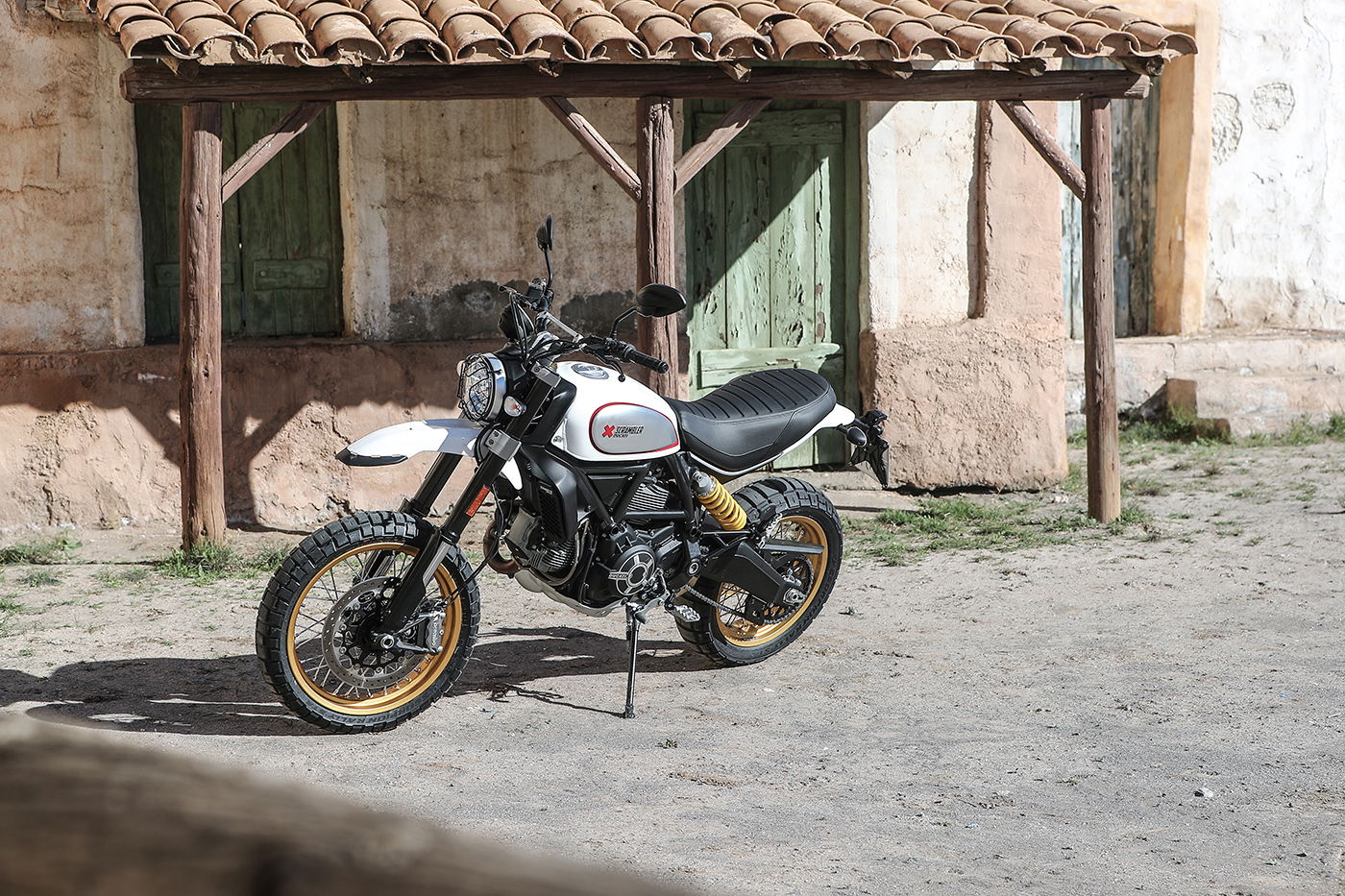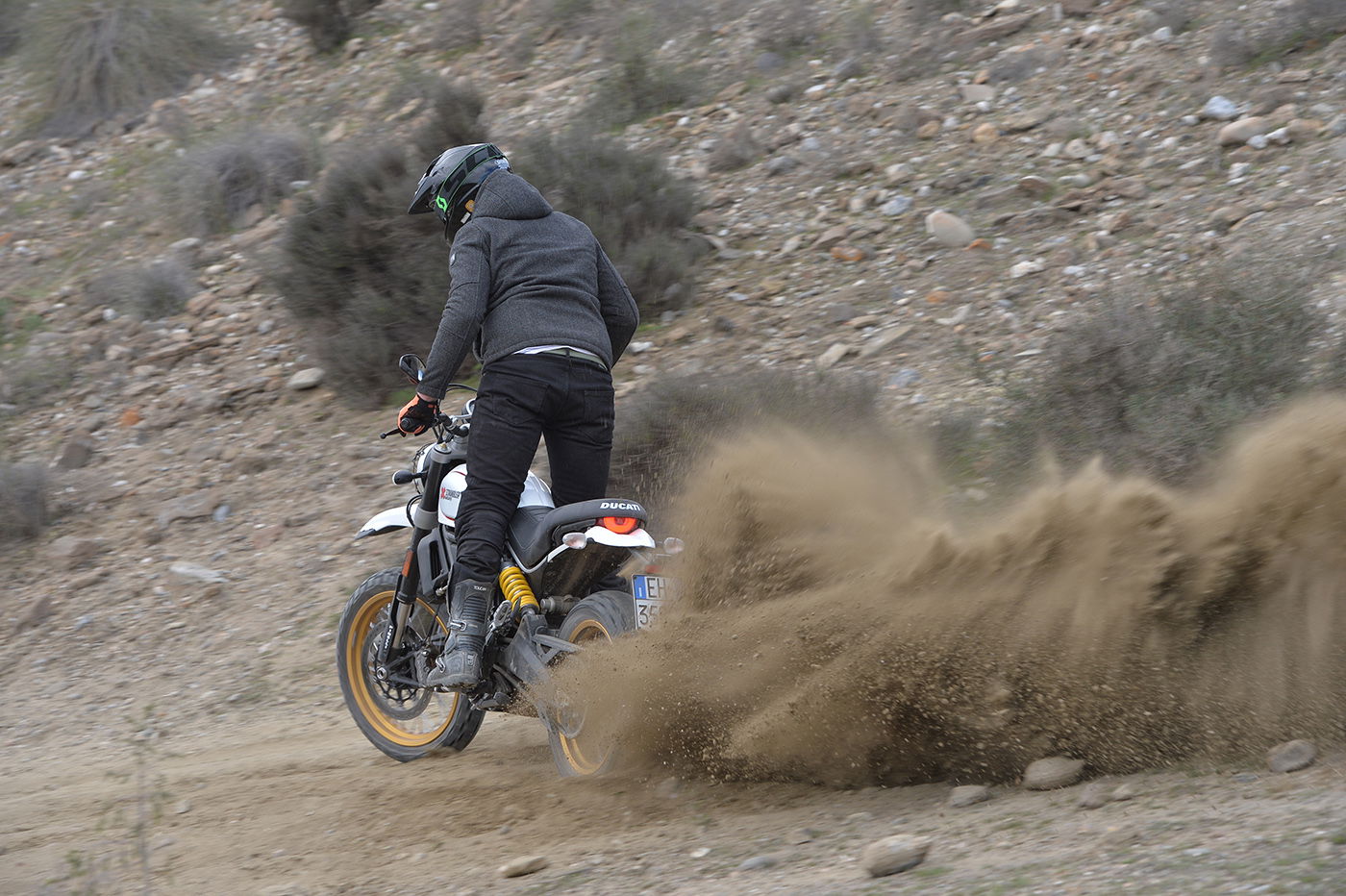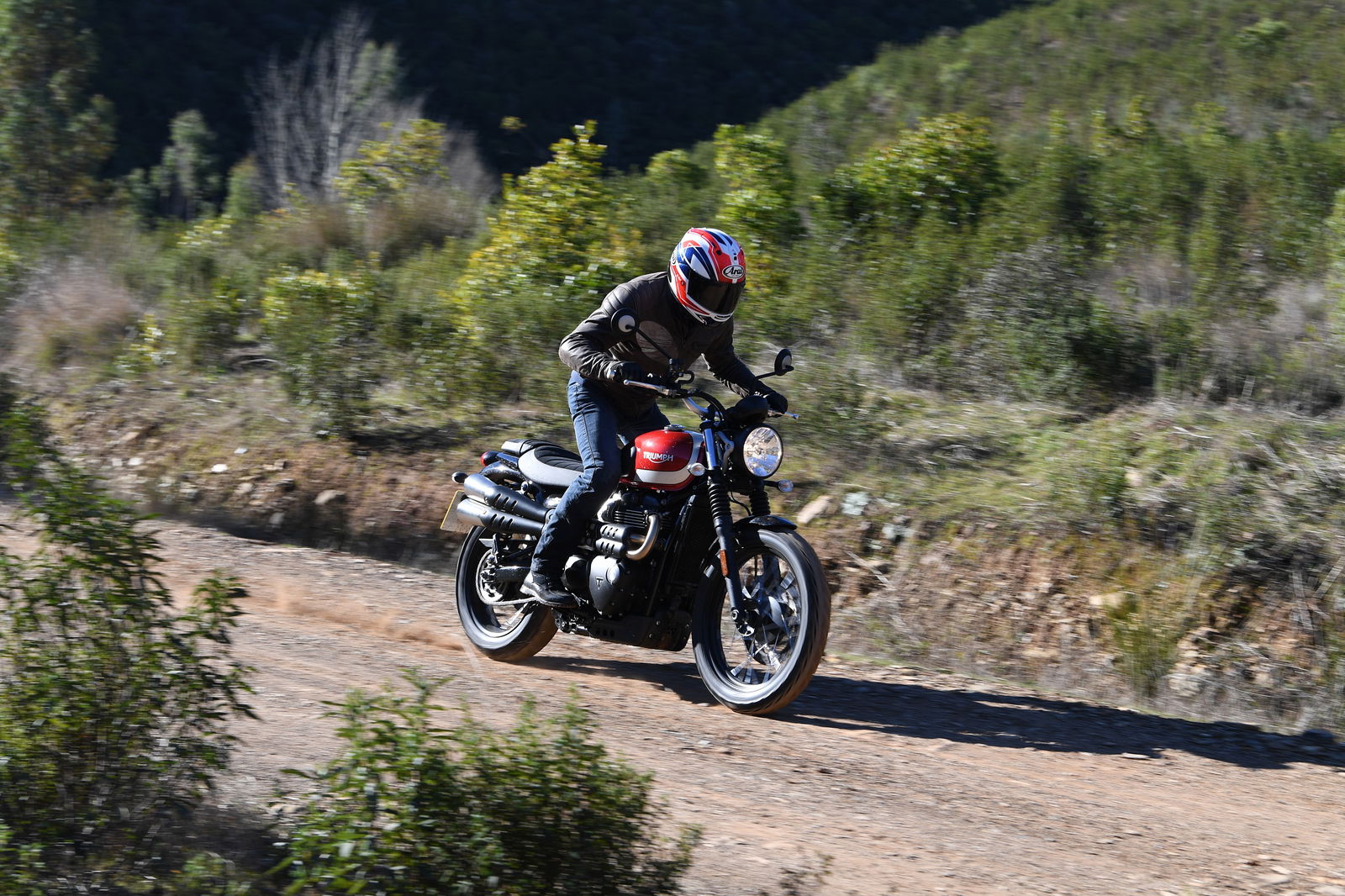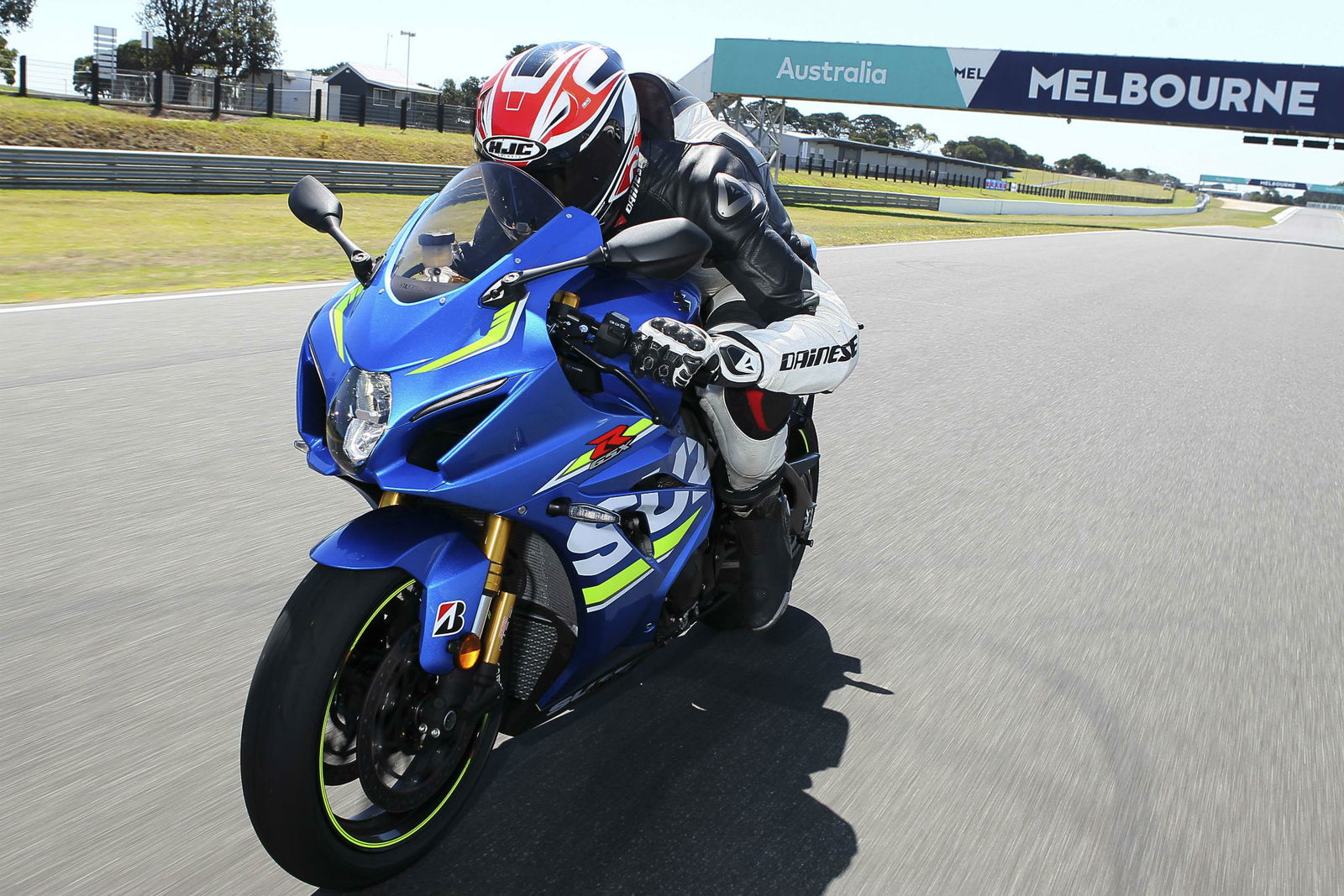Ducati Scrambler Desert Sled review
Ducati Scrambler Desert Sled? Hell yeah, that's what I'm talking about. This one’s designed to go off-road so we sent Llewelyn Pavey into the desert to do some skids.

Ducati Scrambler Desert Sled: Design
The retro café racer, scrambler, 1960s bike fashion revolution is running stronger than ever and that means we’re getting more off-the-shelf bikes that look more custom-built. Ducati is leading the charge with its expanded Scrambler line, which includes the new Desert Sled.
The Scrambler of 2015 and 2016 is a solid bike. It’s not great but it is good. The price was fair, the styling both Ducati, retro and inoffensive, and it's likeable. It had some quirks that left me wanting a little; the suspension felt cheap and harsh and the power delivery from roll on was as abrupt as Ducati could make it but it’s good enough that if you like the the styling, you’d probably be a pretty happy bunny cruising around on it.
Now 2017 is here, we’ve entered into an age of more severe emission rules and more versions of the same model. The Desert Sled is a Ducati Scrambler that has been re-tweaked and beefed up to go off-road in a throw back to the late 60s when off-road bikes were road bikes that had were adulterated in a workshop.

Just like those desert smashing bikes to which the hipster revolution is paying homage, the Scrambler Desert Sled has been under the angle grinder too and although it uses the same Scrambler engine and basic frame, a lot of the bits around it are new.
Ducati Scrambler Desert Sled: Suspension and Handling
The biggest change is the suspension and wheel size combo. Ducati went bigger on the suspension, stretching things out to 200mm of wheel travel at both ends. That’s more than KTM’s 1190 Adventure and a BMW R1200GS. The components of the suspension are entirely new. They’re a much higher spec than the standard Scrambler, offering a fully adjustable fork and a rebound and preload adjustable shock. That also means a new triple clamp design to keep the rake and trail and thus the handling as similar as possible to its little brother.

With that increase in travel, the seat height has bumped up to 860mm (optional 20mm lower version available). Ducati has also narrowed the front of the seat to make it easier to get a foot down.
The wheel size has gone up at the front to a 19-inch wheel and the rear tyre is a little narrower. The 19-inch front wheel is intended to make the Sled work better on the dirt and is a pretty common size on adventure bikes for its all-round friendliness. Ducati and Pirelli also worked together to develop a new, extremely good looking version of the Scorpion Rally tyre to fit the Desert Sled as standard.

The rest of the chassis has also changed. Ducati has beefed the frame up around the engine/swingarm mounts, so it can take more of a pounding. The swingarm is now 25mm longer and the relationship between the footpegs, seat and handlebars is completely different. The bars are a more off-road design, with a cross brace and the weight is up to a beefy 191kg dry thanks to all the heavier, more expensive bits.
The last step on the list of changes is to fit the Euro 4 emissions regulations. We’ve now got some filter thing that helps with emissions but Ducati claims that the power and torque from the 2017 model is identical. More importantly, they’ve added a shaped cam in the throttle to improve the delivery and reduce the slightly unnerving surge of the previous years.
Ducati Scrambler Desert Sled: Comfort
That list of changes boils down to is a bike that is both the same and very different. The platform is identical, but the changes make subtle improvements to the whole package. Right from the get go, riding out of the western film set the launch was based on, it feels incredibly comfortable.
Whether you’re interested in it or not, Ducati’s direction with this bike was to produce something that was capable of being ridden in the dirt comfortably. It turns out the Italian brand are becoming quite adept at making the changes required to make good off-road bikes and just like the Multistrada Enduro, the Ducati Desert Sled is more adept than it has any right to be.
The riding position really helps with this and it’s something Ducati has gotten pretty much perfect. It’s quite an upright position compared to a lot of other dual-sport bikes but that makes it comfortable. The bars are wide and very nicely placed relative to the footpegs and the seat. It seemed to work for everyone, including myself at 6’2”. Being of a taller design, the cockpit is a big improvement for a larger rider when sitting down too. It’s not at all cramped and even over three or four hours in the saddle it was perfectly good.

Having a great riding position is the first step to making a bike work well but what Ducati seemed to have improved most is the way the scrambler carries its weight. It’s gone up in kg’s a large amount and yet it doesn’t feel heavy to ride.
There’s one ergonomic flaw that bugged me - the rear brake pedal was a really odd shape and felt in the wrong place. It meant that, especially when riding stood up, I caught it on the arm rather than the tip and would regularly apply more brake than I wanted. It’s a small, easy thing to fix which made it feel all the more unnecessary a niggle.
The Desert Sled’s off-road trail manners are very good - quick to change direction on the trail but stable and doesn’t swing side-to-side like you’d expect a road-biased bike to. Without doubt, it’s easy to manage. It was more than easy enough for relative off-road novices to tackle the sandy river washes and mountain dirt roads without an overwhelming fear of crashing or dying.
The change in the throttle response at roll-on is also a huge improvement. Ducati say this is going to be the same on all of the bikes and this is without doubt the best update to the Scrambler line. It rolls on as you’d expect a bike to, and has subsequently enhanced the corner exit capabilities and slow speed riding experience.
The upgraded suspension has had a sizeable impact on the ride comfort and handling of the Scrambler. It no longer feels harsh or cheap. It doesn’t translate unnecessary feedback and the control of the damping is much improved. It’s equally good on and off-road and the KYB shocks feel like quality items.
On the dirt it’s comfortable with small jumps, bumps and rocks. On road it holds firm and steady in corners, without wallowing around or smashing you in the back when you’re lazy with speed bumps and it makes for a really nice ride in the real world.
I found the shock problematic. The off-centre mounting design stuck in to my leg. The head of the bolt is partly to blame and using a round headed bolt would make it less bothersome but it was there, in my thigh and it was annoying. It affected different sized people differently and for some people it was very noticeable. Ducati says it's a pre-production part that will be amended before the bike goes on sale.
For a bike that is designed to sell heavily on its aesthetic, I also feel like the shock position is a bit home-brewed and at odds with Ducati’s reputation for style and quality.

The road handling characteristics have also changed a touch from the little brother. It still feels very similar; it tips into corners with the same manner but it does so a little easier. The big handlebars help with that; a huge amount of leverage always helps with that. Sometimes the front end felt a little vague on the road but it wasn’t a feeling that particularly bothered me, mostly because the whole nature of the Scrambler doesn’t urge you to push the envelope.

Ducati Scrambler Desert Sled: Engine
The engine is also good and although the 800cc V twin isn’t packed with big numbers, pushing out a comfortable 75hp, but it does the job. It’s a torque-filled, surging engine rather than something that’ll drag you to big speeds, but it pulls out of corners enjoyably. It does have a habit of convincing you it’s bigger and has more torque than it really does and for the first 20 minutes on the road I was repeatedly in too high of a gear. It doesn’t pull tall gears well and as soon as you clock onto that and rev it a little bit more, it feels punchy and enjoyable. The engine is not ground-breaking or earth shatteringly good but rather functional, smooth and pleasant.

Should I buy the Ducati Scrambler Desert Sled?
If you’re reading this and thinking of buying a Desert Sled, I’d put money on that being because you like the bike: you like the aesthetic and everything that comes with that package. If you’re that person, then the Desert Sled is a bike you’ll love.
It does everything Ducati wants it too and nothing more. It looks great, it rides well, the engine is nice, the suspension better and it can now actually be used in the dirt. But it isn’t exceptional, so if you’re here because you like the style then go to the dealership and put your money down.
It’s a much nicer bike to ride than its shorter-suspended siblings. The suspension is better, the handling enjoyable, the ride comfort much nicer and if the original Scrambler had turned out like this Ducati would’ve sold even more, and that's saying something.
It’s a very solid, very capable bike. I can’t imagine a person having any regrets with buying one and those who do will end up feeling cooler than every other person in the world as they cruise down the beachfront wearing Raybans and chrome-fronted MX boots while doing wheelies off speed bumps.
Ducati Scrambler Desert Sled: Specifications
- Model tested: Ducati Scrambler Desert Sled
- Price: From £9,395
- Engine: 803cc air-cooled L-Twin, Desmodromic distribution, two-valves per cylinder
- Power: 75hp at 8,250rpm
- Torque: 50lb/ft at 5,750rpm
- Suspension: Front – 46mm diameter full adjustable KYB USD forks / Rear – Kayaba shock with preload adjustment
- Brakes: Front – Brembo radial four-piston caliper, 330mm disc / Rear – Brembo single-piston caliper, 245mm disc
- Wheels: Front – Wire-spoked 3”x19” / Rear – Wire-spoked 4.5”x7”
- Tyres: Pirelli Scorpion Rally STR tyres – 120/70 R19 front, 170/60 R17 rear
- Weight: 207kg wet (all fluids, tank 90% full)
- Seat height: 860mm
- Colours: ‘Red Dusk’ and ‘White Mirage’
Photos: Milagro

